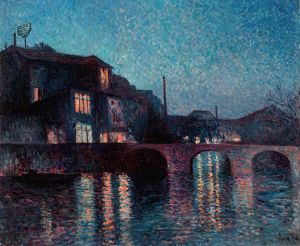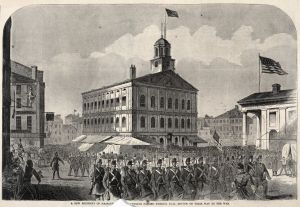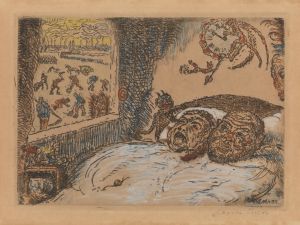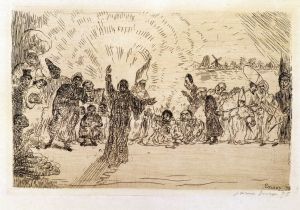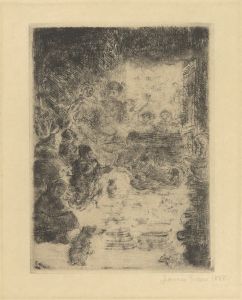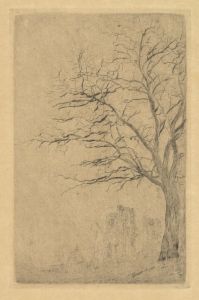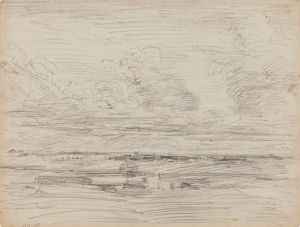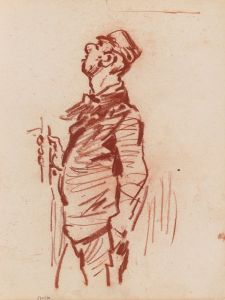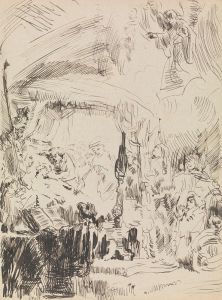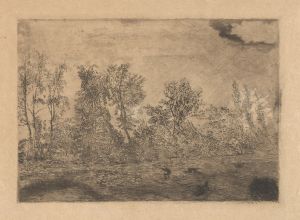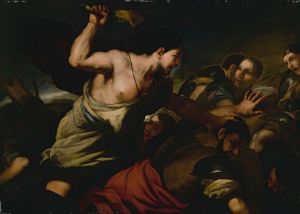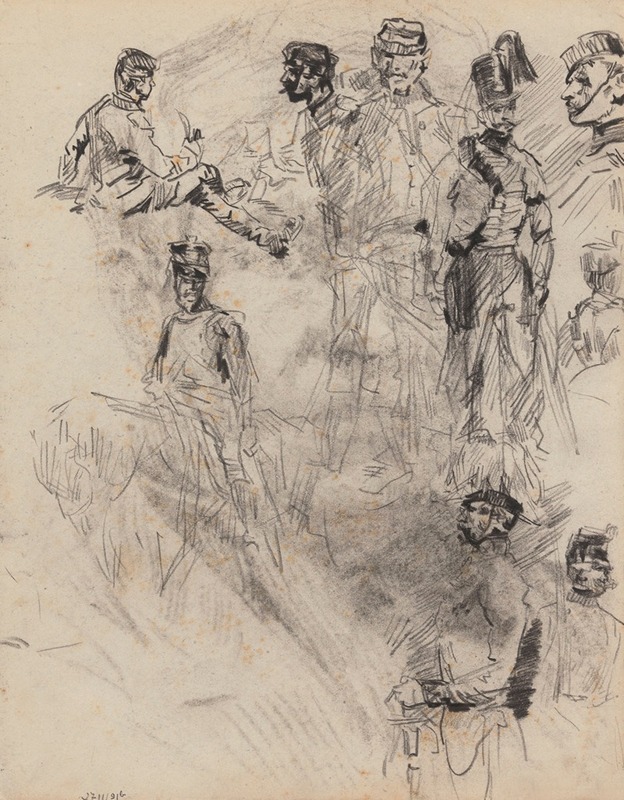
Military Men
A hand-painted replica of James Ensor’s masterpiece Military Men, meticulously crafted by professional artists to capture the true essence of the original. Each piece is created with museum-quality canvas and rare mineral pigments, carefully painted by experienced artists with delicate brushstrokes and rich, layered colors to perfectly recreate the texture of the original artwork. Unlike machine-printed reproductions, this hand-painted version brings the painting to life, infused with the artist’s emotions and skill in every stroke. Whether for personal collection or home decoration, it instantly elevates the artistic atmosphere of any space.
James Ensor's "Military Men" is a notable work by the Belgian artist, who is renowned for his unique style and contribution to the Symbolist movement. Ensor, born in 1860 in Ostend, Belgium, was a pivotal figure in the transition from 19th-century realism to 20th-century expressionism. His work often features satirical and grotesque elements, reflecting his critical view of society and its institutions.
"Military Men" exemplifies Ensor's distinctive approach to art, characterized by his use of vivid colors, dramatic compositions, and a penchant for the bizarre and macabre. Although specific details about the painting "Military Men" are scarce, Ensor's broader body of work provides context for understanding the themes and techniques he employed.
Ensor's art frequently critiques authority and societal norms, and his depiction of military figures can be seen as part of this broader commentary. During Ensor's lifetime, Europe was marked by significant political and social upheaval, including the rise of militarism and the tensions leading up to World War I. Artists of the time often used their work to comment on these developments, and Ensor was no exception. His portrayal of military figures likely reflects his views on the absurdity and destructiveness of war and authority.
Ensor's style is marked by a bold use of color and a tendency to depict figures in a caricatured or exaggerated manner. This approach can be seen in many of his works, where he often uses masks and skeletons to symbolize the hidden and darker aspects of human nature. Such elements might be present in "Military Men," aligning with his thematic focus on the grotesque and the satirical.
The artist's technique often involved a combination of traditional and innovative methods. Ensor was known for his use of oil paints, and his works frequently exhibit a vibrant palette and dynamic brushwork. His compositions are often crowded and chaotic, reflecting the complexity and turmoil of the human condition.
Ensor's influence on modern art is significant, as he paved the way for later movements such as expressionism and surrealism. His willingness to challenge conventional aesthetics and address controversial subjects has earned him a lasting place in art history. While "Military Men" may not be as widely discussed as some of his other works, it nonetheless contributes to the understanding of Ensor's artistic legacy.
In summary, while specific information about "Military Men" is limited, the painting can be appreciated within the broader context of James Ensor's oeuvre. His work is characterized by a critical examination of society, a distinctive visual style, and a profound impact on the development of modern art.






